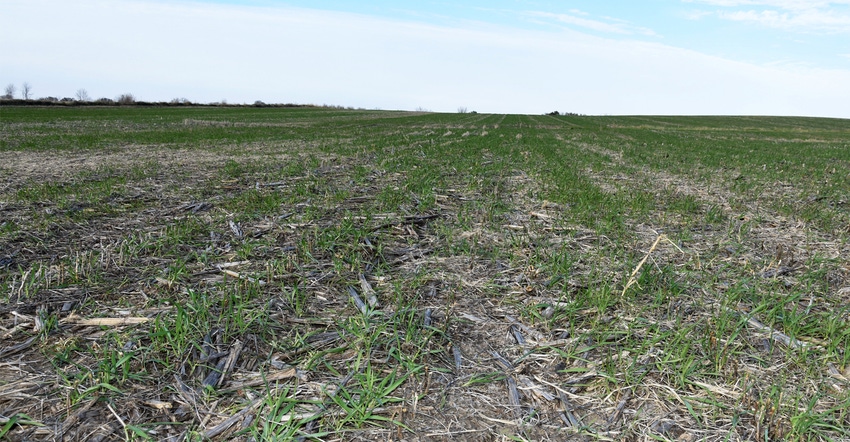March 11, 2020

Farmers in north-central Iowa’s prairie pothole region have a new conservation option enabling them to receive payments for planting cover crops. USDA, through its Conservation Reserve Program, is offering a pilot program called the Soil Health and Income Protection Program.
SHIPP offers payments to farmers for planting cover crops on their land for three to five years. “We are excited to provide a short-term CRP option tailored to the unique soil health needs of producers in the prairie pothole region,” says Richard Fordyce, administrator of the Farm Service Agency. “The number of acres that can be enrolled in the program is limited, and participation will be on a first-come, first-served basis. Interested landowners should contact their FSA county office now to apply.”
Sign-up starts March 30 and ends Aug. 21, with a total of 50,000 acres to be enrolled in Iowa and four other states. The benefits of cover crops include improved soil health and water quality while having the option to harvest, hay and graze the acres at certain times of the year. The new program is offering the option of three-, four- or five-year contracts to establish cover crops on less-productive cropland in exchange for payments.
Farmers are encouraged to talk to their FSA county office soon about whether this pilot fits their farming operation or whether to consider another longer-term option. For more information, visit fsa.usda.gov/crp or contact your local FSA office.
The prairie pothole region is a unique land formation covering portions of Iowa, Minnesota, Montana, North Dakota and South Dakota. The region is known for its shallow wetlands that are only filled part of the year.
USDA says the SHIPP pilot plan is the latest option in a full suite of opportunities available for farmers through CRP and other conservation programs offered by the agency.
Increased financial assistance
USDA also recently announced it is now providing increased financial assistance to Iowa farmers through another program. The Natural Resources Conservation Service is offering eligible farmers 75% financial assistance for source water protection conservation practices located in priority areas across Iowa. This is a 25% increase compared to standard financial assistance rates.
Source water refers to sources of water, such as rivers, streams, lakes or reservoirs, that provide water to public water drinking supplies. Maps showing Iowa priority areas and a list of eligible practices are available on the Iowa NRCS website.
Funding for conservation practices is available through the Conservation Stewardship Program (CSP), Environmental Quality Incentives Program (EQIP), Regional Conservation Partnership Program (RCPP), and the Agricultural Conservation Easement Program (ACEP). Interested farmers and landowners may apply at their local USDA Service Center.
The current farm bill requires NRCS to use at least 10% of its annual financial assistance funds to support source water quality protection. More than 50 conservation practices that protect surface water, groundwater or both are available for implementation. Examples include cover crops, wetlands, terraces and contour buffer strips.
Iowa NRCS collaborated with conservation partners and groups throughout the state to develop the conservation practice list and identify priority areas. On a statewide basis, funding will be split 55% for groundwater source protection and 45% surface water source protection. For more information, contact your local NRCS office or go to ia.nrcs.usda.gov.
Source: NRCS, which is solely responsible for the information provided and is wholly owned by the source. Informa Business Media and all of its subsidiaries are not responsible for any content contained in this information asset.
You May Also Like




